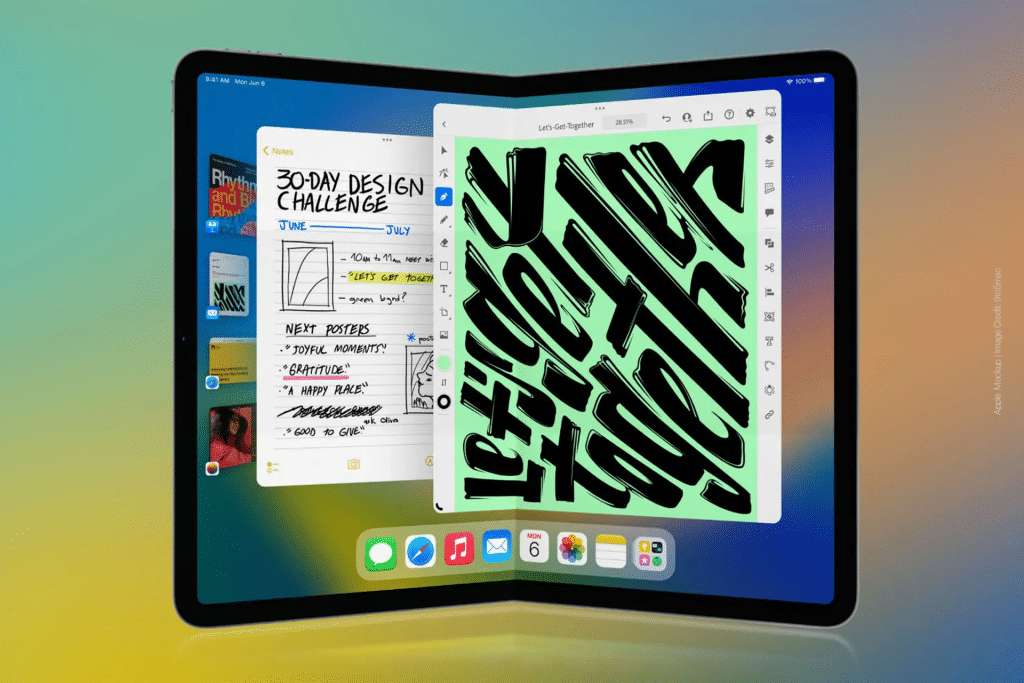As reported by AppleInsider on May 11, 2025, these developments signal Apple’s strategic push into foldable and touch-enabled devices, potentially transforming how users interact with Macs and iPads. While the company has historically resisted merging the Mac and iPad ecosystems, recent patents and supply chain insights suggest a bold shift toward hybrid, versatile form factors by 2027 or 2028.
A folding iPad is among the most anticipated additions to Apple’s tablet lineup, promising to combine the portability of a smaller device with the expansive screen real estate of a larger one. Analyst Jeff Pu predicts a foldable iPad could arrive as early as late 2026, with Bloomberg’s Mark Gurman aligning on a 2027 timeline alongside other foldable devices. This device, potentially resembling an iPad mini when folded, could unfold to offer a display close to a standard iPad’s size, ideal for professionals like graphic designers who rely on the Apple Pencil for precision work. Rumors point to a device with an outer screen for notifications when closed, enhancing its utility for quick interactions.
The folding iPad’s appeal lies in its versatility. For instance, a compact 11-inch tablet on a flight could expand to a 22-inch workspace in a meeting, catering to users who need flexibility without sacrificing portability. However, challenges remain, including high production costs—rival foldables like the Samsung Galaxy Z Fold6 retail for $2,565—and durability concerns, such as hinge reliability and display creases. Apple’s collaboration with Samsung and LG on foldable OLED displays aims to address these, with reports indicating a focus on thinner, more durable panels to meet Apple’s stringent standards.
Touchscreen Macs: A New Era for macOS
Apple’s exploration of touchscreen Macs marks a departure from its long-standing stance that touch interfaces are better suited to iPads. Patents filed as recently as 2023, including one titled “Touch Sensing Utilizing Integrated Micro Circuitry,” reveal Apple’s work on integrating touch-sensitive displays into MacBooks, potentially transforming the MacBook Pro into a hybrid device. AppleInsider notes that such a Mac could feature a touchscreen display alongside a digital keyboard or trackpad, replacing traditional hardware components for a sleeker design.
This shift could appeal to users seeking a more intuitive macOS experience, particularly for creative tasks like video editing or illustration. However, Apple executives, including Craig Federighi, have previously argued that lifting arms to touch a screen is ergonomically taxing, suggesting any touchscreen Mac would need to balance touch with traditional input methods. The rumored 18.8-inch foldable MacBook, expected by 2027 or 2028, could serve as a hybrid, functioning as a MacBook when unfolded and a tablet-like device when closed, though Apple has ruled out merging macOS and iPadOS.
Why It Matters
These innovations reflect Apple’s response to evolving user needs for portable, multifunctional devices. A folding iPad could revolutionize workflows for creatives and professionals, offering a larger canvas without the bulk of a traditional tablet. Meanwhile, a touchscreen MacBook could bridge the gap between macOS’s power and the tactile immediacy of touch, appealing to users who value flexibility. Both devices align with Apple’s history of refining existing technologies—think iPad’s tablet dominance—by addressing pain points like cost, durability, and creases that have hindered foldables from rivals like Samsung.
Yet, challenges loom. High costs could limit mainstream adoption, with foldable devices potentially priced well above standard iPads or MacBooks. Durability concerns, particularly around hinges and display longevity, must be resolved to meet Apple’s premium standards. Additionally, Apple’s reluctance to fully embrace touch on Macs suggests a cautious approach, likely prioritizing hybrid designs over fully touch-dependent systems. Supply chain leaks, as reported by AppleInsider, indicate Apple is working with LG and Samsung to develop cost-effective, durable displays, but these technologies may not mature until later this decade.
Looking Ahead
The introduction of touchscreen Macs and folding iPads could redefine Apple’s ecosystem, offering users unprecedented flexibility. A folding iPad might debut as early as 2026, with a touchscreen MacBook following by 2028, based on analyst timelines and patent activity. These devices won’t replace existing iPads or Macs but will expand Apple’s offerings for niche markets, such as creatives and enterprise users. For instance, a foldable iPad could streamline presentations, while a touchscreen MacBook might enhance collaborative workflows.
Apple’s cautious approach—evident in its decade-long exploration of foldables—ensures these products will launch only when they meet high standards for reliability and user experience. As costs decrease and display technologies improve, Apple could dominate the foldable market, much like it did with tablets. For now, the touchscreen Macs and folding iPads remain a tantalizing glimpse into Apple’s future, promising to blend innovation with practicality by the decade’s end.
